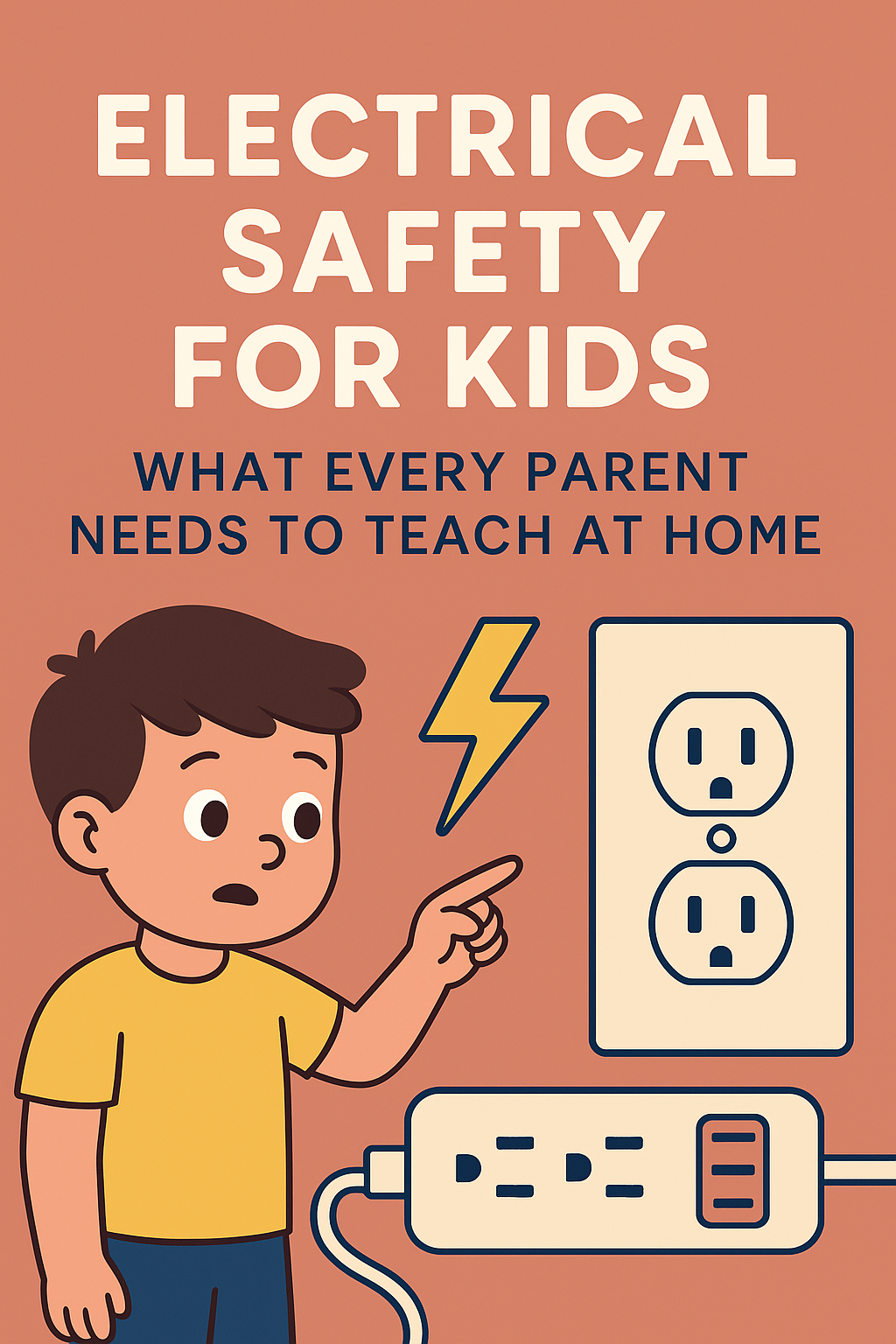A Mom’s Guide to Raising Electrically Smart Kids
If you’ve ever walked into a room and caught your 7-year-old trying to “fix” the nightlight with a butter knife… you’re not alone.
As babies, we stress about baby-proofing every outlet. But as kids get older and more independent, electrical safety becomes a whole new ballgame, one that’s less about covers and more about teaching.
And as a mom (and the wife of an electrician), I can tell you this: electrical safety isn’t just about avoiding accidents, it’s about raising kids who understand how to be smart and confident around real-life dangers.
So whether your kid is plugging in their first charger, helping Dad in the garage, or just naturally curious about “how things work,” here’s what to teach them.
Just a heads up:
Some of the links in this post are affiliate links. If you click and make a purchase, I may earn a small commission—at no extra cost to you. I only share things I truly use and love, and every little bit helps support this blog and our family. Thanks for being here!
⚡ Why Electrical Safety for Older Kids Matters
Let’s face it — older kids are explorers. They’re also:
- More independent with devices and electronics
- Smart enough to think they know what they’re doing
- Not quite experienced enough to see what could go wrong
The stats back it up: The U.S. Consumer Product Safety Commission reports that thousands of children ages 5–14 are injured every year in home electrical incidents. Many of these are preventable with simple education and awareness.
🧠 What to Teach Kids About Electricity (By Age)
Here’s a breakdown of important electrical safety concepts, matched to your child’s maturity and daily routines:
🧯 Ages 5–8: Foundations + Awareness
- Electricity is powerful and not a toy.
- Cords, outlets, and plugs are for adults.
- Don’t stick anything in an outlet. (Yes, even pencils and toys.)
- Keep water away from anything that plugs in.
- If something smells weird, sparks, or makes a popping sound — get an adult.
🛠 Hands-on idea: Let them help unplug something with supervision and show them how to hold the plug, not yank the cord. Remember to remind them to always ask for help with plugging or unplugging something in.
🖥 Ages 9–12: Independence + Boundaries
- Only use chargers and cords that belong to you and are in good condition.
- Never plug too many things into one outlet or power strip.
- Learn the basics of a breaker panel — how it shuts off power in emergencies.
- Never use electronics if your hands or the floor are wet.
🧠 Mini lesson: Do a “plug check” together — go around the house and spot frayed cords, overloaded outlets, or loose plugs. Let them be the safety inspector!
🧑🔧 Ages 13+: Confidence + Responsibility
- Understand how circuits work, especially if they help in the garage, with tools, or behind the TV.
- Never attempt electrical repairs without an adult or proper training.
- Learn how to reset a tripped breaker — and when to call an adult.
- Know how to safely unplug and power off during emergencies (like water leaks or power outages).
⚠️ Real talk: This is the age when some kids start experimenting. Emphasize why safety rules aren’t about fear — they’re about respect for powerful tools.
🔌 House Rules Worth Repeating (for All Ages)
These are our family’s non-negotiables, especially with kids in a contractor’s home:
- No plugging/unplugging without asking first (especially in new rooms or garages).
- No charging devices under pillows or blankets. Fire hazard.
- Power tools = adult-only zone. Even if Dad makes it look easy.
- Phones and electronics stay out of the bathtub. Yes, it still has to be said.
- Always tell an adult if something sparks, shocks, or smells hot.
🛒 Favorite Kid-Friendly Electrical Safety Tools
Here are a few smart upgrades that help reinforce safety as kids grow:
- Tamper-resistant outlets (they still help, even with bigger kids)
- Smart plugs with auto shut-off (great for lamps and gaming setups)
- Cord sleeves or organizers to prevent tripping + unplugging chaos
- Circuit breaker panel labels so they can learn what controls what
🛒 Check out my Electrical Safety Must-Haves for Families Pinterest board for links to what we use in our own home.
💬 Make It a Conversation, Not a Lecture
Your kids won’t remember the one-time speech about electrical safety. But they will remember the conversations, habits, and little moments that show them how to be responsible.
So let them help. Let them ask questions. And when they say, “Can I try plugging that in?” treat it as a teachable moment, not a panic.
Because teaching them to respect electricity (not fear it) is one of the smartest things you can do as a parent.
Questions on how to baby proof your home? Check out my blog on Electrical Baby Proofing Tips!


Comments
One response to “Teaching Electrical Safety to Children: Practical Tips for Safer Homes”
[…] Browse my other blogs on Electrical Safety For Kids and Electrical Baby Proofing for New Moms for links to shop and more real-life photos of how […]